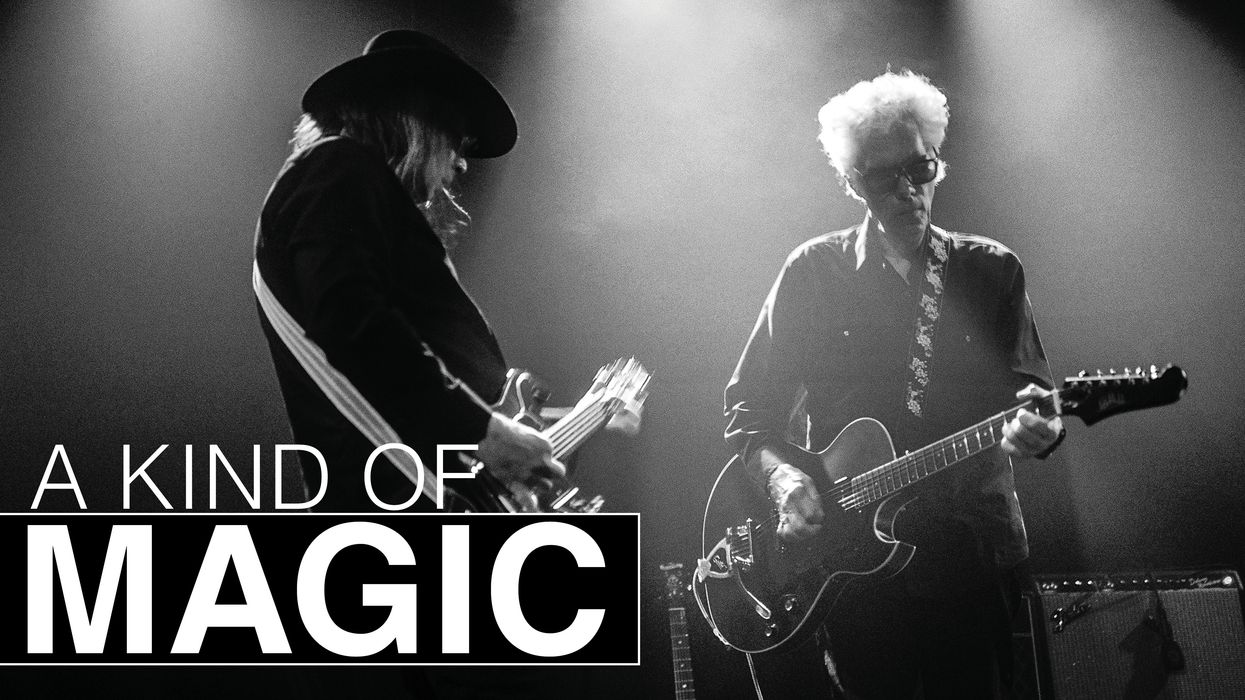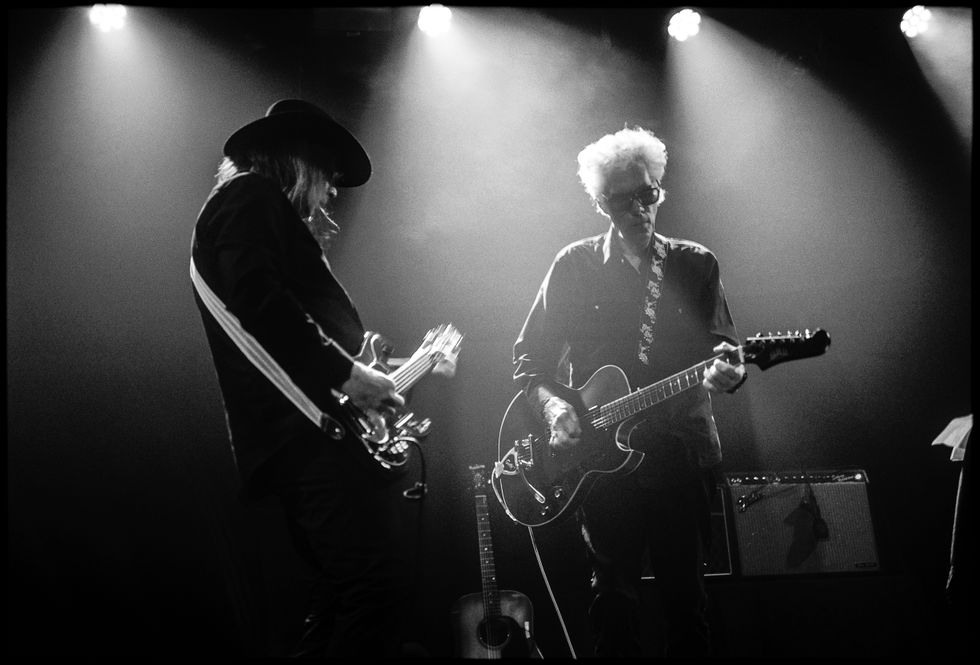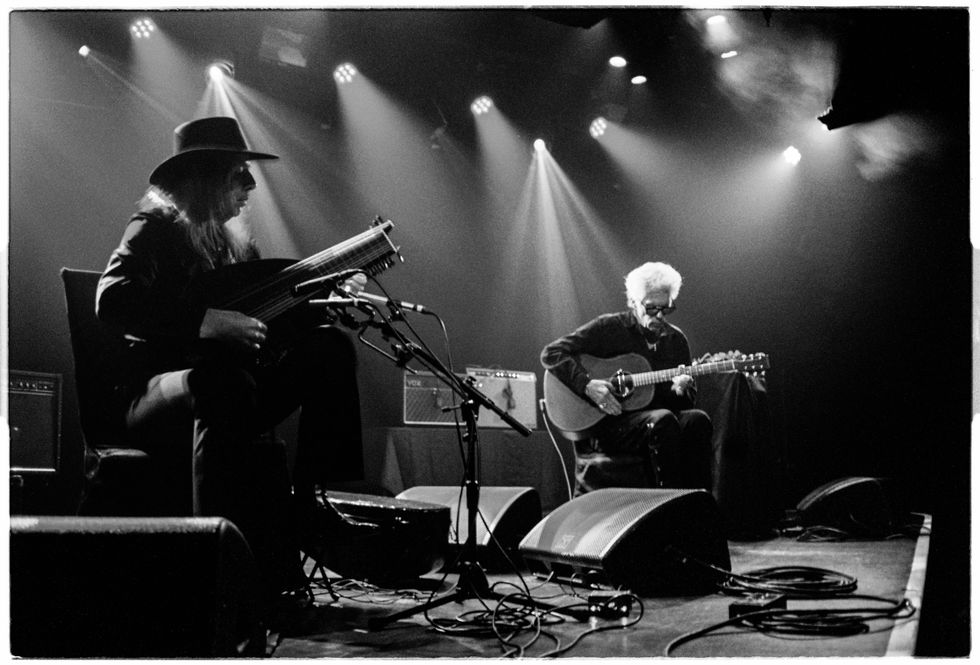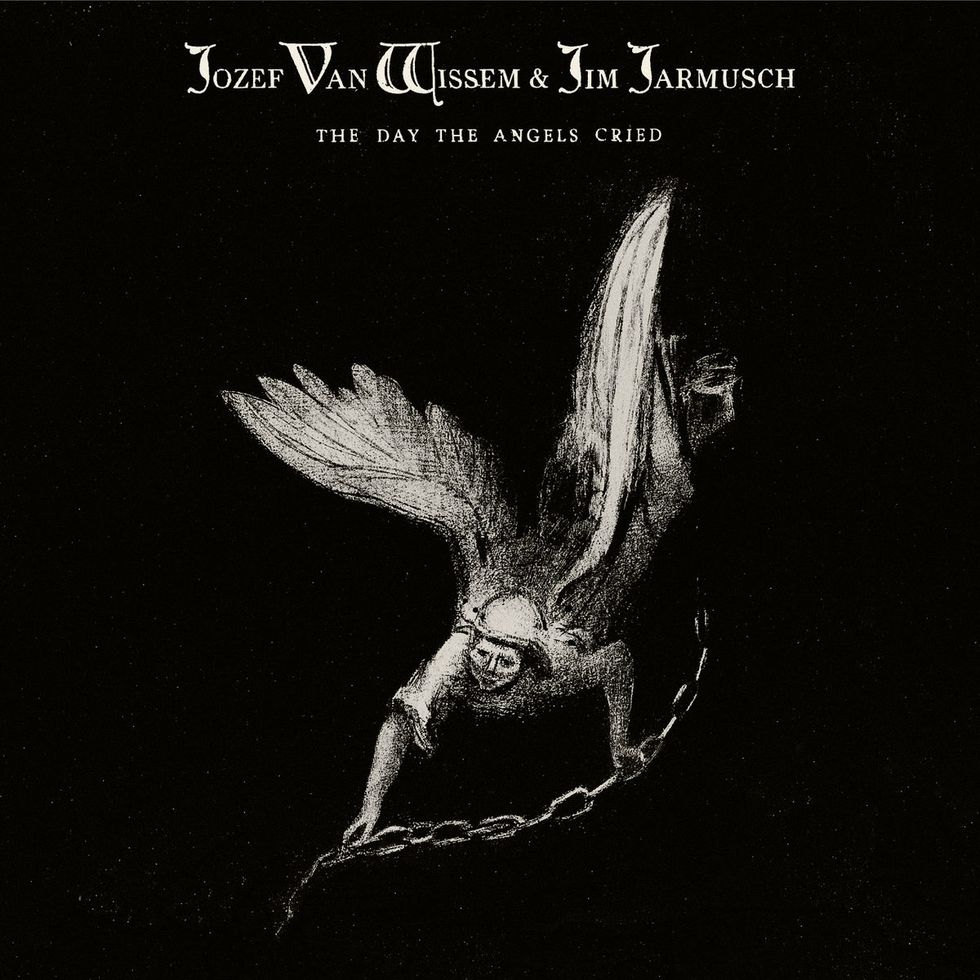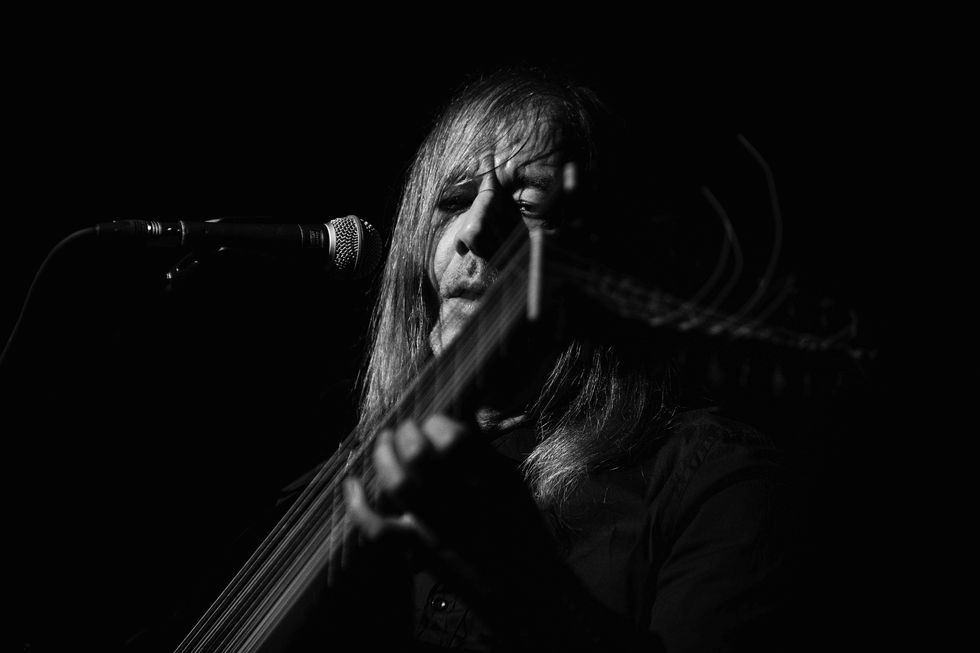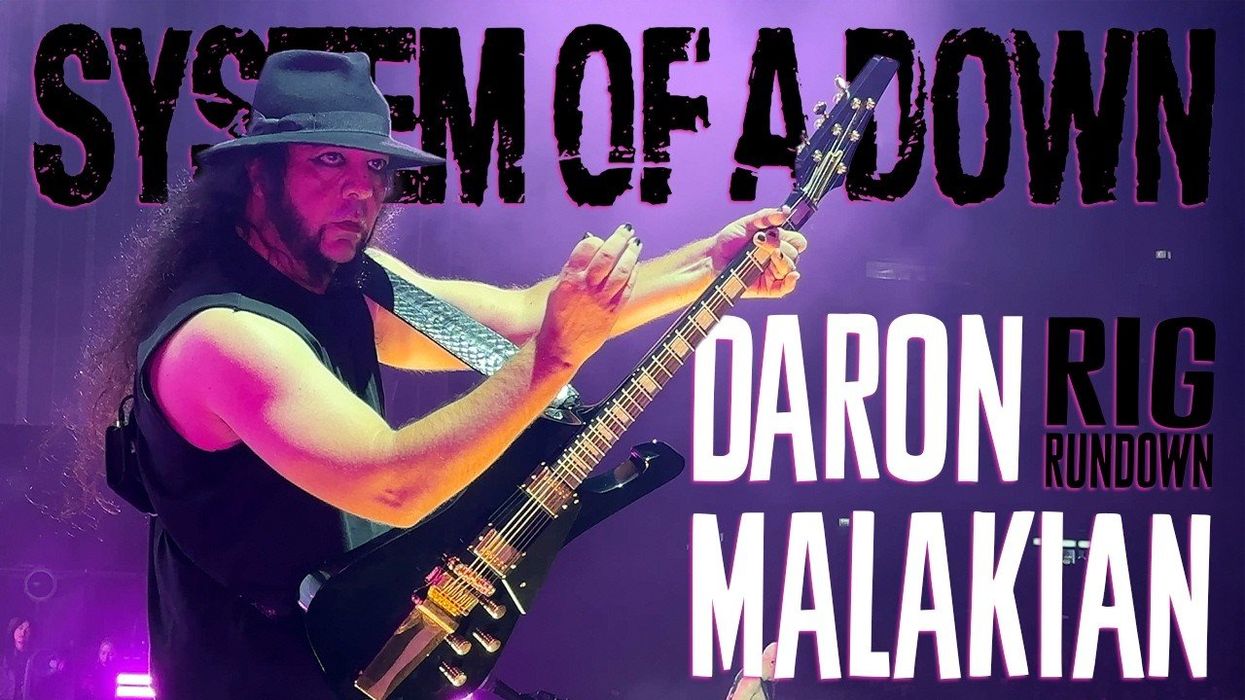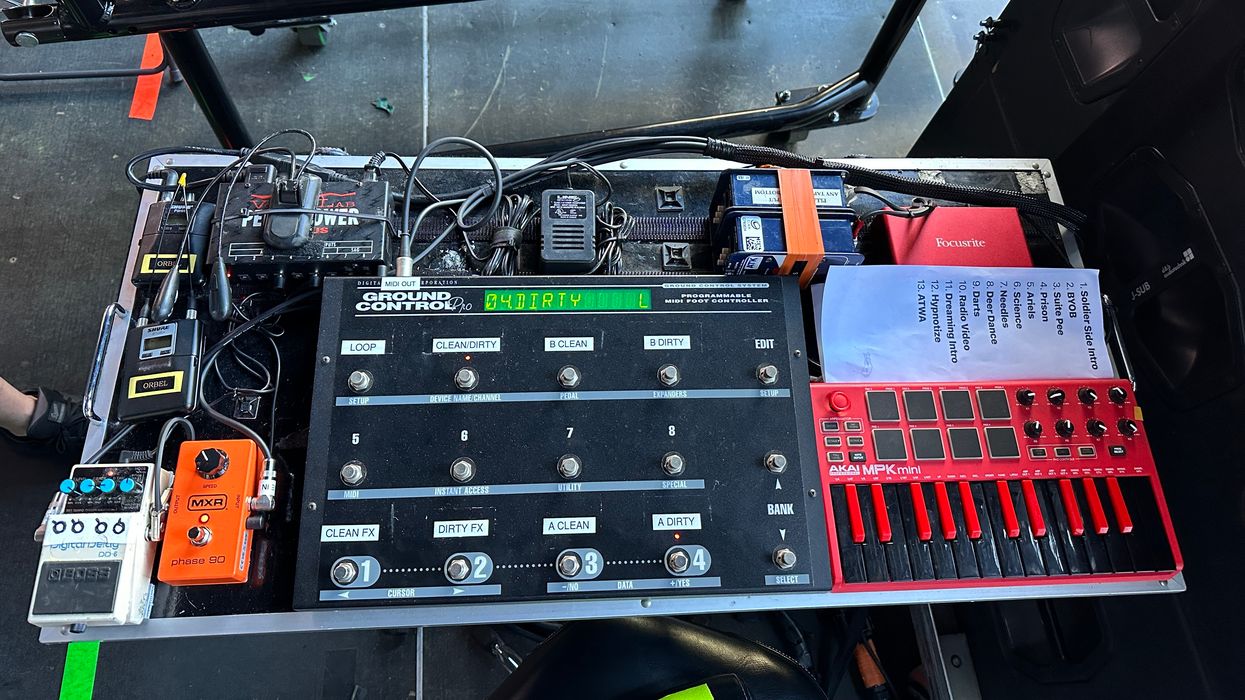Australian fingerpicking virtuoso Tommy Emmanuel is turning 70 this year. He’s been performing since he was 6, and for every solo show he’s played, he’s never used a setlist.
“My biggest decision every day on tour is, ‘What do I want to start with? How do I want to come out of the gate?’” Emmanuel explains to me over a video call. “A good opener has to have everything. It has to be full of surprise, it has to have lots of good ideas, lots of light and shade, and then, hit it again,” he says, illustrating each phrase with his hands and ending with a punch. “You lift off straightaway with the first song, you get airborne, you start reaching, and then it’s time to level out and take people on a journey.”
In May 2023, Emmanuel played two shows at the Sydney Opera House, the best performances from which have been combined on his new release, Live at the Sydney Opera House. The venue’s Concert Hall, which has a capacity of 2,679, is a familiar room for Emmanuel, but I think at this point in his career he wouldn’t bring a setlist if he was playing Wembley Stadium. On the recording, Emmanuel’s mind-blowingly dexterous chops, distinctive attack and flair, and knack for culturally resonant compositions are on full display. His opening song for the shows? An original, “Countrywide,” with a segue into Chet Atkins’ “El Vaquero.”
“When I was going to high school in the ’60s, I heard ‘El Vaquero’ on Chet Atkins’ record, [1964’s My Favorite Guitars],” Emmanuel shares. “And when I wrote ‘Countrywide’ in around ’76 or ’77, I suddenly realized, ‘Ah! It’s a bit like “El Vaquero!”’ So I then worked out ‘El Vaquero’ as a solo piece, because it wasn’t recorded like that [by Atkins originally].
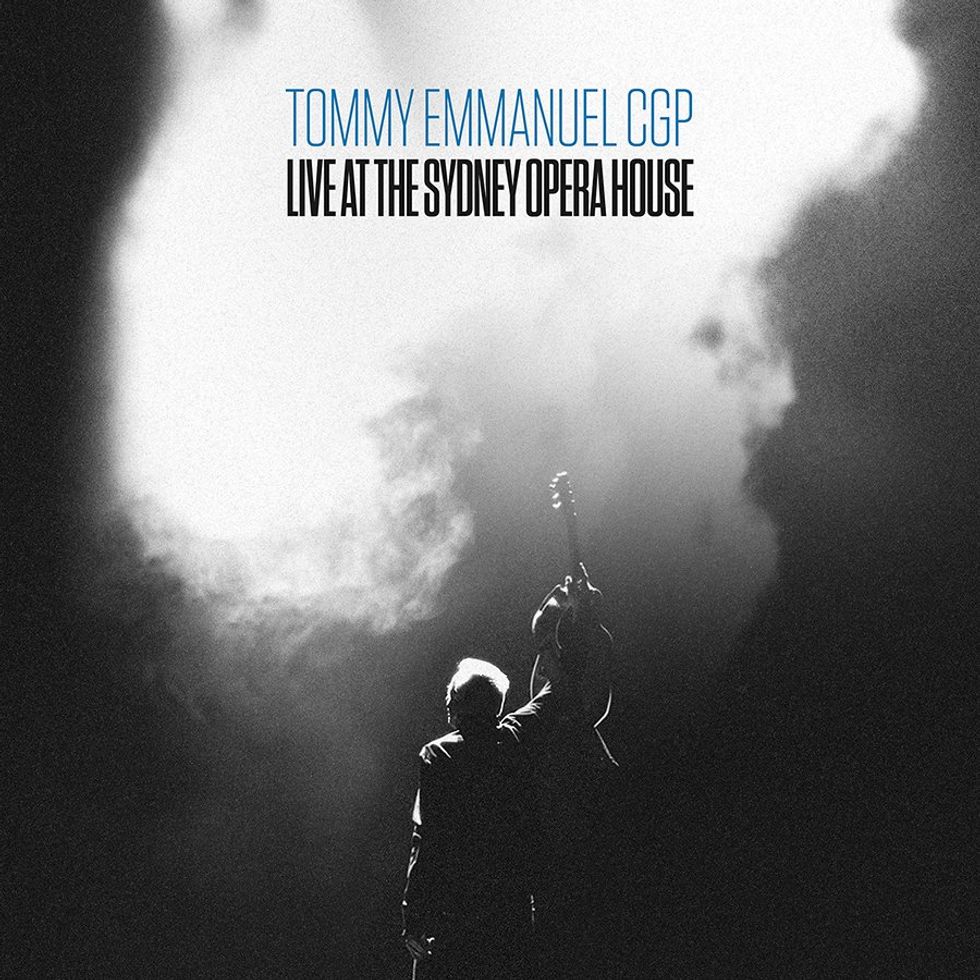
“The co-writer of ‘El Vaquero’ is Wayne Moss, who’s a famous Nashville session guy who played ‘da da da’ [sings the guitar riff from Roy Orbison’s ‘Pretty Woman’]. And he played on a lot of Chet’s records as a rhythm guy. So once when I played ‘El Vaquero’ live, Wayne Moss came up to me and said, ‘You know, you did my part and Chet’s at the same time. That’s not fair!’” Emmanuel says, laughing.
Atkins is the reason Emmanuel got into performing. His mother had been teaching him rhythm guitar for a couple years when he heard Atkins on the radio and, at 6, was able to immediately mimic his fingerpicking technique. His father recognized Emmanuel’s prodigious talent and got him on the road that year, which kicked off his professional career. He says, “By the time I was 6, I was already sleep-deprived, working too hard, and being forced to be educated. Because all I was interested in was playing music.”
Emmanuel talks about Atkins as if the way he viewed him as a boy hasn’t changed. The title Atkins bestowed upon him, C.G.P. (Certified Guitar Player), appears on Emmanuel’s album covers, in his record label (C.G.P. Sounds), and is inlaid at the 12th fret on his Maton Custom Shop TE Personal signature acoustic. (Atkins named only five guitarists C.G.P.s. The others are John Knowles, Steve Wariner, Jerry Reed, and Atkins himself.) For Emmanuel, even today most roads lead to Atkins.
When I ask Emmanuel about his approach to arranging for solo acoustic guitar, he says, “It was really hit home for me by my hero, Chet Atkins, when I read an interview with him a long time ago and he said, ‘Make your arrangement interesting.’ And I thought, ‘Wow!’ Because I was so keen to be true to the composer and play the song as everyone knows it. But then again, I’m recreating it like everyone else has, and I might as well get in line with the rest of them and jump off the cliff into nowhere. So it struck me: ‘How can I make my arrangements interesting?’ Well, make them full of surprises.”
When Emmanuel was invited to contribute to 2015’s Burt Bacharach: This Guitar’s in Love with You, featuring acoustic-guitar tributes to Bacharach’s classic compositions by various artists, Emmanuel expresses that nobody wanted to take “(They Long to Be) Close to You,” due to its “syrupy” nature. But for Emmanuel, this presented an entertaining challenge.
He explains, “I thought, ‘Okay, how can I reboot “Close to You?’ So even the most jaded listener will say, ‘Holy fuck—I didn’t expect that! Wow, I really like that; that is a good melody!’ So I found a good key to play the song in, which allowed me to get some open notes that sustain while I move the chords. Then what I did is, in every phrase, I made the chord unresolve, then resolve.
Tommy Emmanuel's Gear

“I’m writing music for the film that’s in my head,” Emmanuel says. “So, I don’t think, ‘I’m just the guitar,’ ever.”
Photo by Simone Cecchetti
Guitars
- Three Maton Custom Shop TE Personals, each with an AP5 PRO pickup system
Amps
- Udo Roesner Da Capo 75
Effects
- AER Pocket Tools preamp
Strings & Picks
- Martin TE Signature Phosphor Bronze (.012–.054)
- Martin SP strings
- Ernie Ball Paradigm strings
- D’Andrea Pro Plec 1.5 mm
- Dunlop medium thumbpicks
“And then to really put the nail in the coffin, at the end, ‘Close to you’ [sings melody]. I finished on a major 9 chord which had that note in it, but it wasn’t the key the song was in, which is a typical Stevie Wonder trick. All the tricks I know, the wonderful ideas that I’ve stolen, are from Michael Jackson, Stevie Wonder, Lionel Richie, James Taylor, Carole King, Neil Diamond. All of the people who wrote really incredibly great pop songs and R&B music—I stole every idea I could, and I tried to make my little two-and-a -half minutes as interesting and entertaining as possible. Because entertainment equals: Surprise me.”
I share with Emmanuel that the performances on Live at the Sydney Opera House, which include his popular “Beatles Medley,” reminded me of another possible arrangement trick. In Harpo Marx’s autobiography, Harpo Speaks, I preface, Marx writes of a lesson he learned as a performer—to “answer the audience’s questions.” (Emmanuel says he’s a big fan of the book and read it in the early ’70s.) That happened for me while listening to the medley, when, after sampling melodies from “She’s a Woman” and “Please Please Me,” Emmanuel suddenly lands on “While My Guitar Gently Weeps.”
I say, “I’m waiting for something that hits more recognizably to me, and when ‘While My Guitar’ comes in, that’s like answering my question.”
“It’s also Paul and John, Paul and John, George,” Emmanuel replies. “You think, ‘That’s great, that’s great pop music,’ then, ‘Wow! Look at the depth of this.’”
Often Emmanuel’s flights on his acoustic guitar are seemingly superhuman—as well as supremely entertaining.
Photo by Ekaterina Gorbacheva
A trick I like to employ as a writer, I say to Emmanuel, is that when I’m describing something, I’ll provide the reader with just enough context so that they can complete the thought on their own.
“You can do that musically as well,” says Emmanuel. He explains how, in his arrangement of “What a Wonderful World,” he’ll play only the vocal melody. “When people are asking me at a workshop, ‘How come you don’t put chords behind that part?’ I say, ‘I’m drawing the melody and you’re putting in all the background in your head. I don’t need to tell you what the chords are. You already know what the chords are.’”
“Wayne Moss came up to me and said, ‘You know, you did my part and Chet’s at the same time. That’s not fair!’”
Another track featured on Live at the Sydney Opera House is a cover of Paul Simon’s “American Tune” (which Emmanuel then jumps into an adaptation of the Australian bush ballad, “Waltzing Matilda”). It’s been a while since I really spent time with There Goes Rhymin’ Simon (on which “American Tune” was first released), and yet it sounded so familiar to me. A little digging revealed that its melody is based on the 17th-century Christian hymn, “O Sacred Head, Now Wounded,” which was arranged and repurposed by Bach in a few of the composer’s works. The cross-chronological and genre-lackadaisical intersections that come up in popular music sometimes is fascinating.
“I think the principle right there,” Emmanuel muses, “is people like Bach and Beethoven and Mozart found the right language to touch the heart of a human being through their ears and through their senses ... that really did something to them deep in their soul. They found a way with the right chords and the right notes, somehow. It could be as primitive as that.
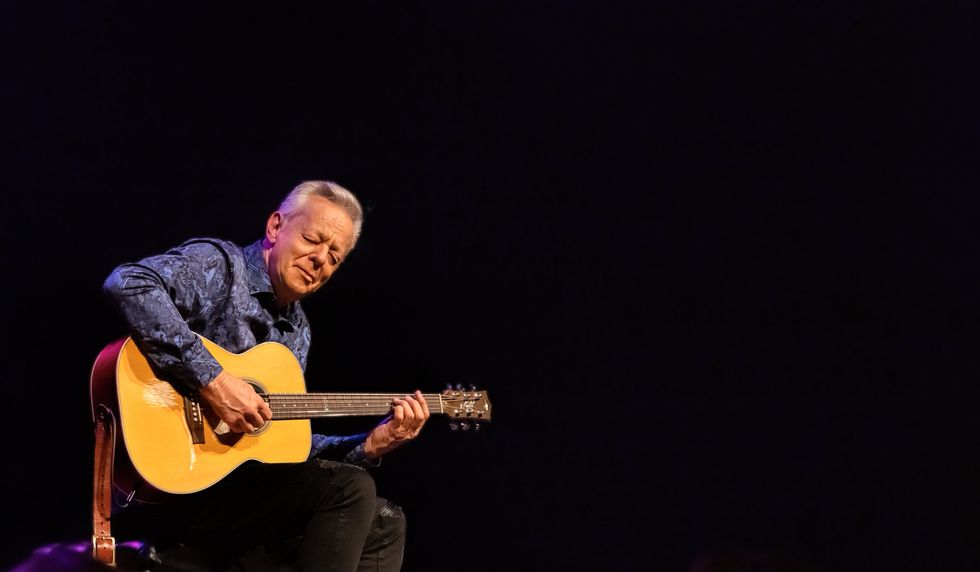
Tommy Emmanuel has been on the road as a performing guitarist for 64 years. Eat your heart out, Bob Dylan.
Photo by Jan Anderson
“It’s like when you’re a young composer and someone tells you, ‘Have a listen to Elton John’s “Candle in the Wind,”’ he continues. “‘Listen to how those notes work with those chords.’ And every time you hear it, you go, ‘Why does it touch me like that? Why do I feel this way when I hear those chords—those notes against those chords?’ I say, it’s just human nature. Then you wanna go, ‘How can I do that!’” he concludes with a grin.
“You draw from such a variety of genres in your arrangements,” I posit. “Do you try to lean into the side of converting those songs to solo acoustic guitar, or the side of bridging the genre’s culture to that of your audience?”
“I stole every idea I could, and I tried to make my little two-and-a-half minutes as interesting and entertaining as possible. Because entertainment equals: Surprise me.”
“If I was a method actor,” Emmanuel explains, “what I’m doing is—I’m writing music for the film that’s in my head. So, I don’t think, ‘I’m just the guitar,’ ever. I always think it has to have that kind of orchestral, not grandeur, but … palette to it. Because of the influence of Stevie Wonder, Billy Joel, and Elton John, especially—the piano guys—I try to use piano ideas, like putting the third in the low bass a lot, because guitar players don’t necessarily do that. And I try to always do something that makes what I do different.
“I want to be different and recognizable,” he continues. “I remember when people talked about how some players—you just hear one note and you go, ‘Oh, that’s Chet Atkins.’ And it hit me like a train, the reason why a guy like Hank Marvin, the lead guitar player from the Shadows.... I can tell you: He had a tone that I hear in other players now. Everyone copied him—they just don’t know it—including Mark Knopfler, Eric Clapton, Jimmy Page, all those people. I got him up to play with me a few times when he moved to Australia, and even playing acoustic, he still had that sound. I don’t know how he did it, but it was him. He invented himself.”
YouTube It
Emmanuel performs his arrangement of “What a Wonderful World,” illustrating how omitting a harmonic backdrop can have a more powerful effect, especially when playing such a well-known melody.
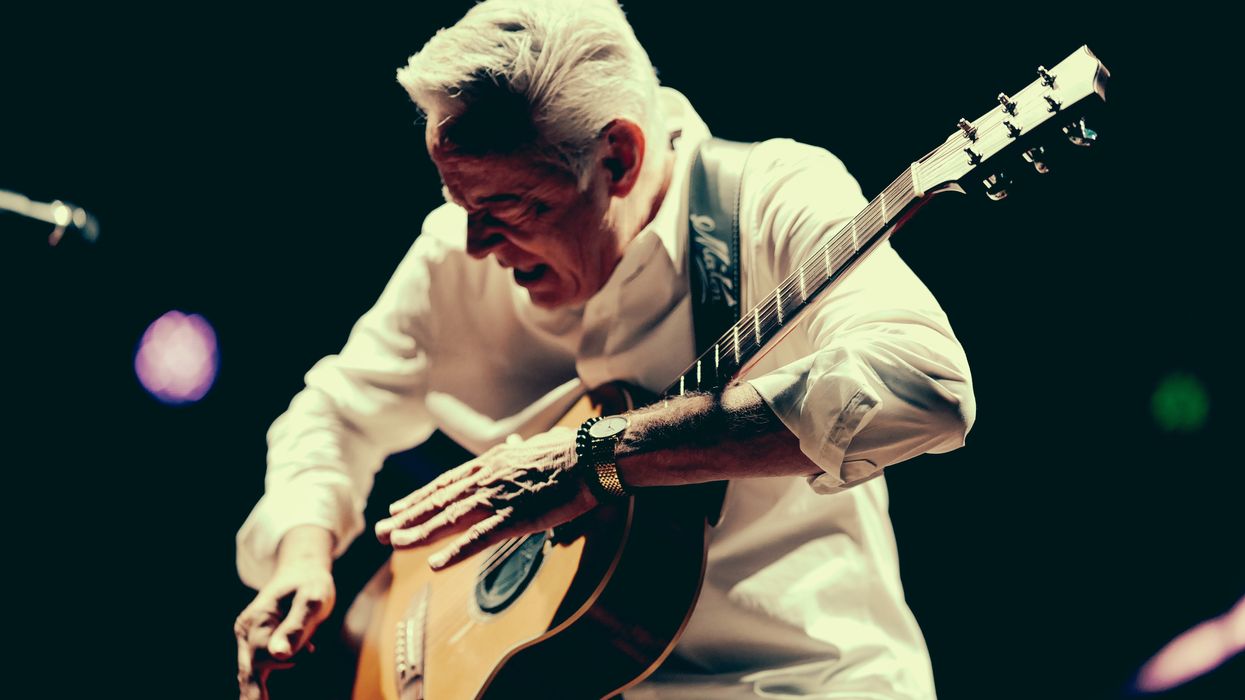





![Devon Eisenbarger [Katy Perry] Rig Rundown](https://www.premierguitar.com/media-library/youtube.jpg?id=61774583&width=1245&height=700&quality=70&coordinates=0%2C0%2C0%2C0)






























